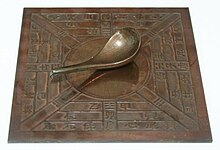
The history of geomagnetism is concerned with the history of the study of Earth's magnetic field. It encompasses the history of navigation using compasses, studies of the prehistoric magnetic field (archeomagnetism and paleomagnetism), and applications to plate tectonics.
Magnetism has been known since prehistory, but knowledge of the Earth's field developed slowly. The horizontal direction of the Earth's field was first measured in the fourth century BC but the vertical direction was not measured until 1544 AD and the intensity was first measured in 1791. At first, compasses were thought to point towards locations in the heavens, then towards magnetic mountains. A modern experimental approach to understanding the Earth's field began with de Magnete, a book published by William Gilbert in 1600. His experiments with a magnetic model of the Earth convinced him that the Earth itself is a large magnet.
- ^ Turner 2010, Chapter 1
© MMXXIII Rich X Search. We shall prevail. All rights reserved. Rich X Search
